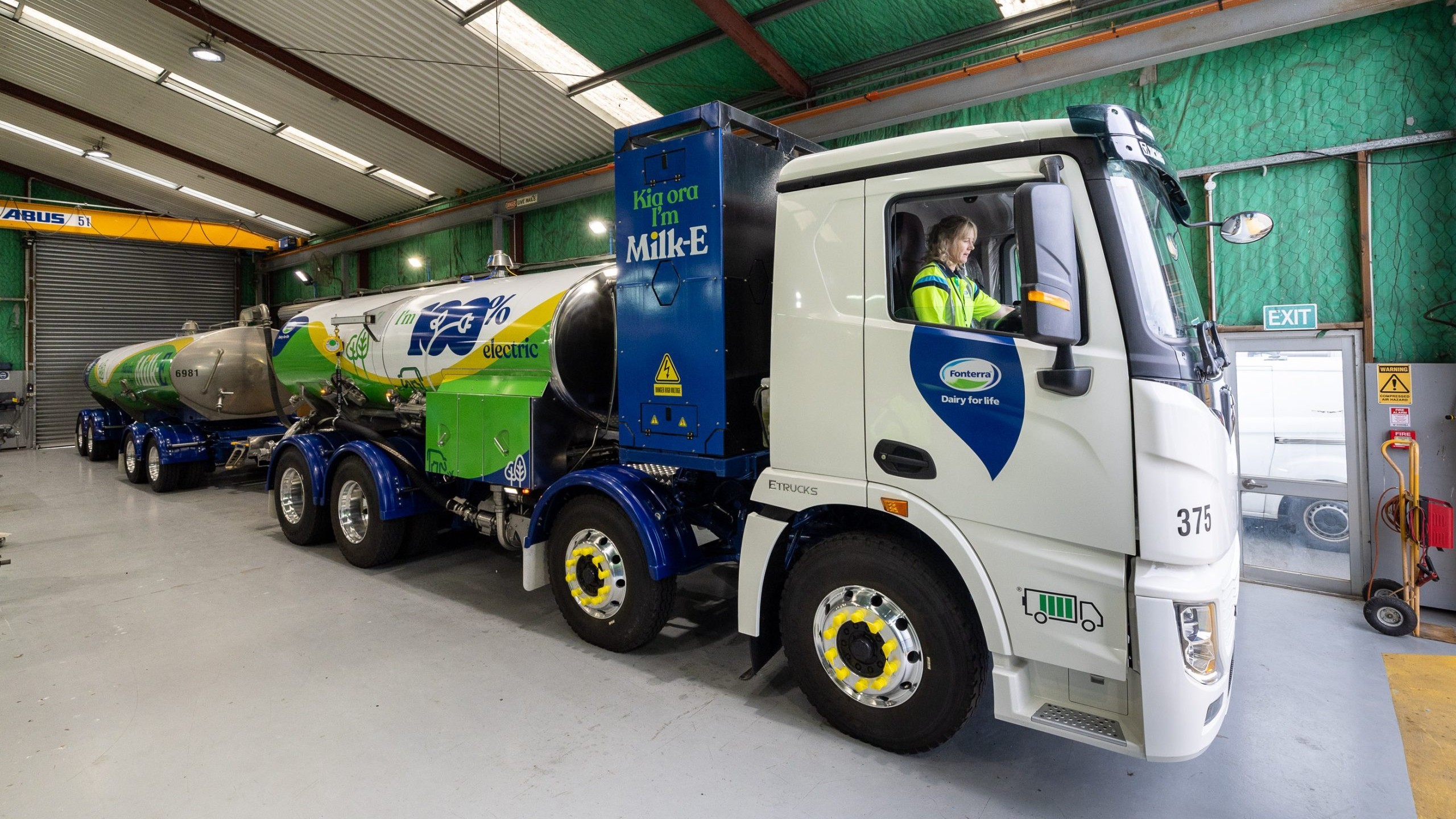
A century ago, the Fonterra site at Waitoa was home to New Zealand’s largest fleet of electric milk trucks. It will now also be home to the country’s first (modern) electric milk tanker, which joined the Fonterra fleet in July.
The truck, named Milk-E by a Fonterra farmer in a naming competition run by the co-op, is part of Fonterra’s fleet decarbonisation programme. Fonterra received co-funding from the government’s Low Emissions Transport Fund (LEFT), administered by EECA (the Energy Efficiency and Conservation Authority).

The truck is an XCMG E700 8×4 battery swap, supplied by Etrucks. It will operate at 46-tonne GVM with the trailer. Providing the electrons is a 282kWh swappable battery, and Fonterra is expecting a range of about 140km on a full charge. The truck takes three hours to charge, but Fonterra has a battery-swap system installed at the Waitoa site allowing a fully charged battery to be swapped out in six minutes.
The electric motor produces 215kW rated power and 360kW peak power, with rated and peak torque at 1200Nm and 2800Nm, respectively. Drive goes through a six-speed automatic transmission to the 4.11:1 rear axle.

Fonterra national fleet technical manager Richard Suckling and the team at Fonterra’s Morrinsville workshop conceived, built and adapted Milk-E for the job.
The team assembles more than 60 tankers a year at the facility.
“Being a New Zealand first, there’s been a lot of creative thinking and Kiwi ingenuity to bring Milk-E to life,” says Fonterra COO Fraser Whineray.
Changes to the battery configuration have allowed the team to try other additions to improve milk collection efficiencies, reduce safety concerns, and lessen the amount of work required to customise a Fonterra tanker.
“It’s been great to see the team turn challenges into opportunities, so in addition to trialling Milk-E’s on-road ability, we’re also trialling a new electric pump, hose configuration and cabinetry,” says Whineray.
The tank will be the same size as a regular Fonterra tanker carrying 28,000 litres. However, because of the weight penalty of a battery electric truck, it will hold about 2300 litres of milk less.

The need for a hydraulic tank and pump has been removed, replaced by the fully electric motor and pump. Positioning the electric pump on the driver’s side has reduced the pipework on the truck by 3.4m, reducing tare weight. The milk hose now falls naturally back across truck guards and is secured onto a Bayonet connection, which locks the hose in place and seals the end of the hose in transit.
Newly designed doors that open out sideways with minimal moving parts, result in improved safety. EECA group manager Investment and engagement, Nicki Sutherland, says: “We’re pleased to see this project come to life. New Zealand has ambitious targets to reduce carbon emissions rapidly, and transport is key. If successful, this project could be replicated across several New Zealand businesses.”





